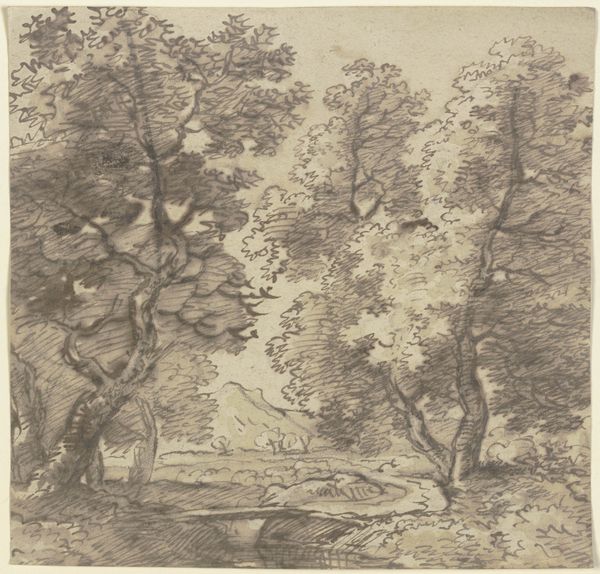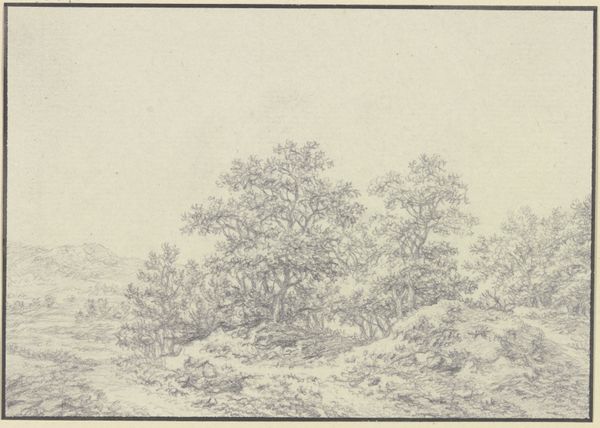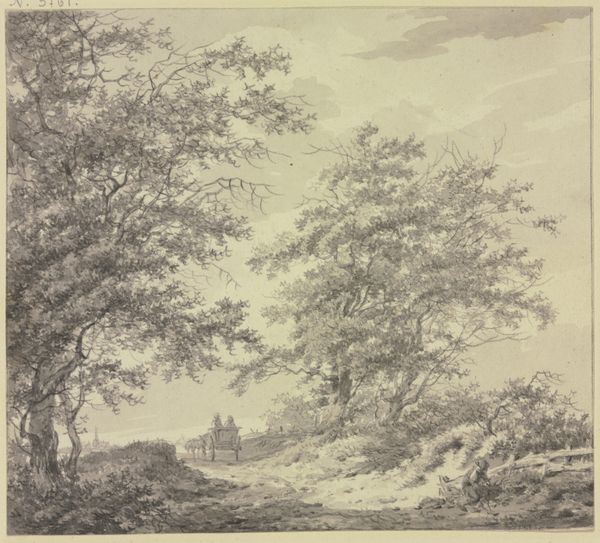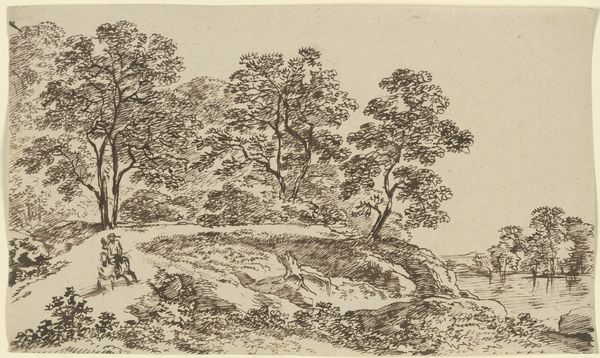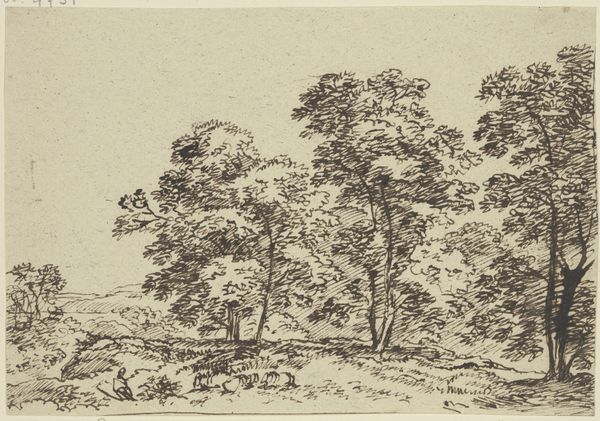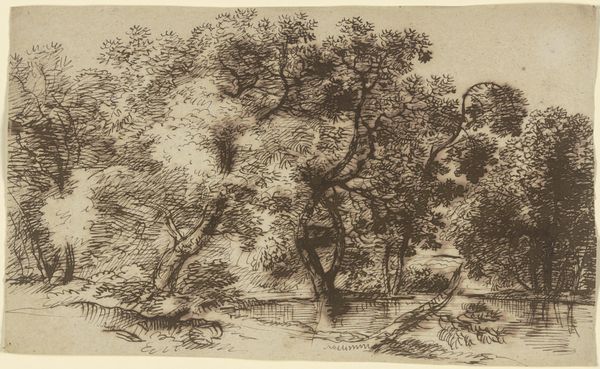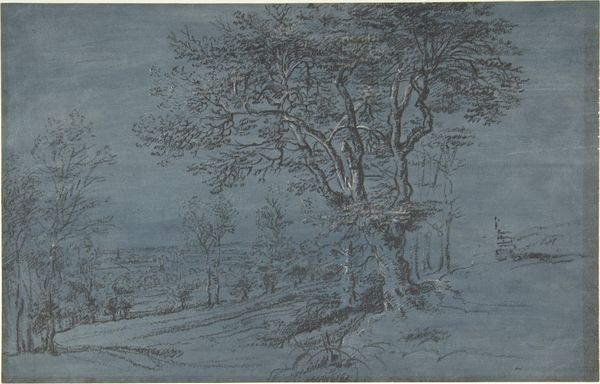
Unter Eichbäumen weidet ein Pferd, im Hintergrund eine Ebene mit einem Dorf
0:00
0:00
drawing, ink, pencil
#
drawing
#
baroque
#
landscape
#
ink
#
pencil drawing
#
pencil
#
14_17th-century
Copyright: Public Domain
Editor: This drawing, “Unter Eichbäumen weidet ein Pferd, im Hintergrund eine Ebene mit einem Dorf” is by Anthonie Waterloo, probably from the 17th century. It’s rendered in pencil and ink and depicts a pastoral scene. The shadows are so pronounced; what strikes me is how the artist uses darkness to frame this scene of rural life. What do you see in this piece? Curator: This drawing, to me, is less about a peaceful rural scene, and more about the visual manifestation of power dynamics within 17th-century Dutch society. Consider the idealized landscape – is it simply a neutral backdrop? Or is it actively reinforcing existing hierarchies of land ownership and social class? Editor: Hmm, that's a perspective I hadn't considered. I was focusing on the horse peacefully grazing, the idyllic setting. But you're suggesting we should question whose perspective this is? Curator: Exactly. Think about the labor required to maintain this idealized vision, and who benefits from that labor. Landscape art in this period often served to legitimize the wealthy landowner’s claim to territory, essentially erasing the working class who toiled on that land. Is this artist complicit in that erasure? Editor: So, you are asking if this pretty drawing serves as propaganda? I can see that... So, looking again, do you see hints of social commentary, or critique within the work, or is it a purely celebratory depiction? Curator: It’s nuanced, isn’t it? I'd argue the very absence of human labor in the foreground – besides that singular horse– is a powerful statement. But a lack of visibility doesn't mean absence of power; in fact, it's a classic demonstration of its ability to mask structures that continue operating invisibly. Editor: Wow, that’s a really incisive interpretation! I had never considered the political undertones of landscape art. I'll definitely view these pieces differently going forward. Curator: And hopefully, we all consider how contemporary art continues to shape and reflect those same dynamics today.
Comments
No comments
Be the first to comment and join the conversation on the ultimate creative platform.

